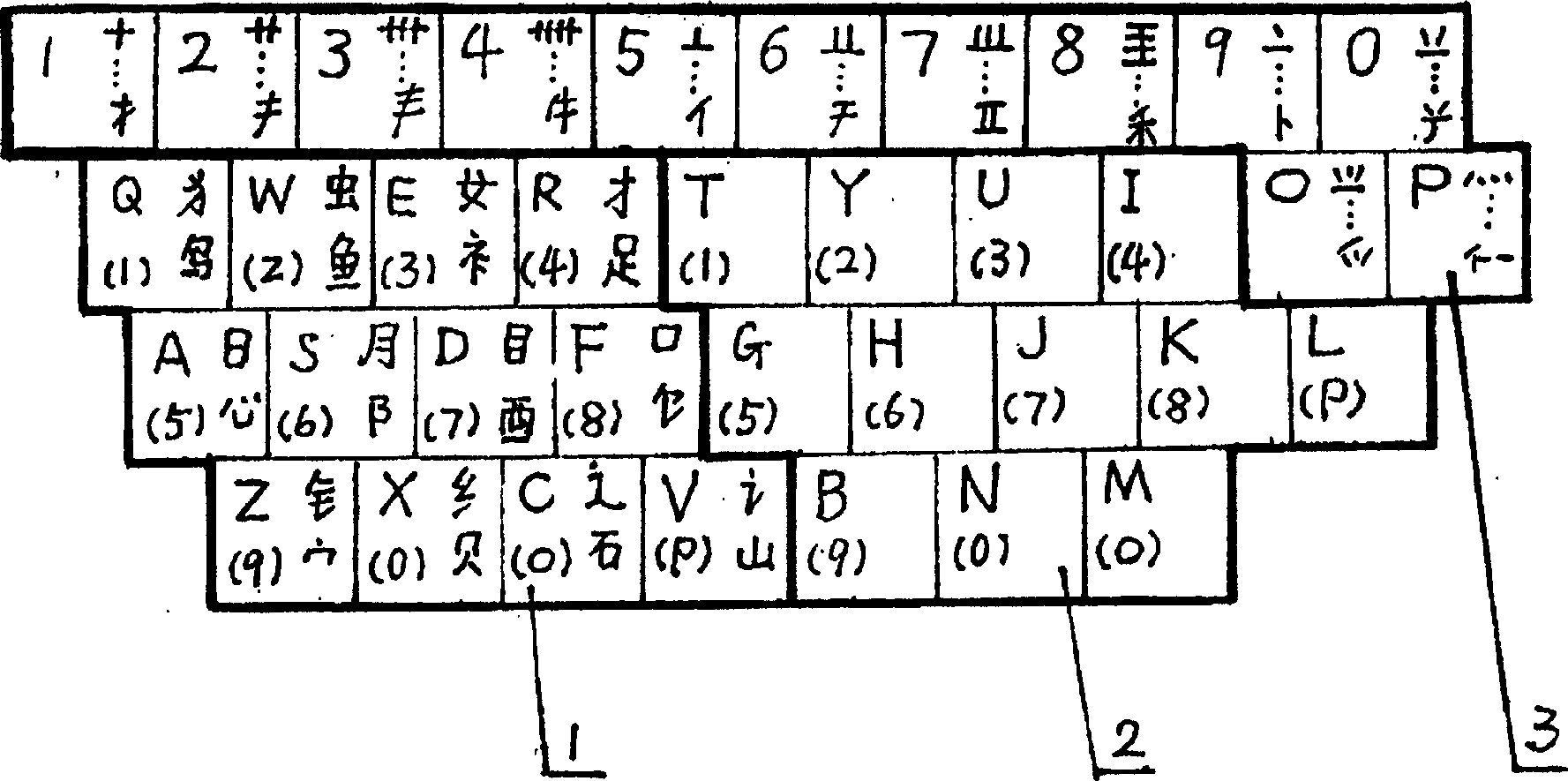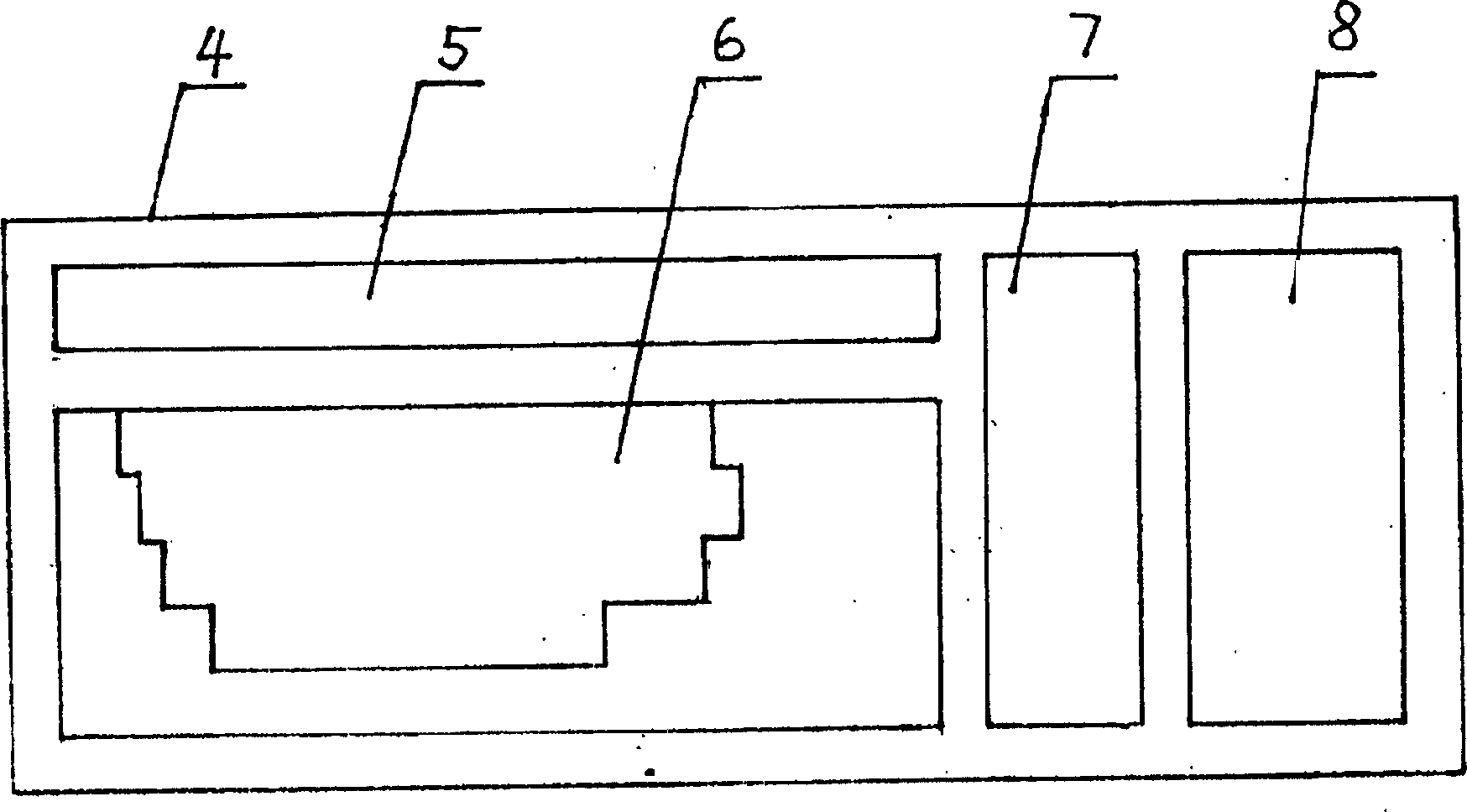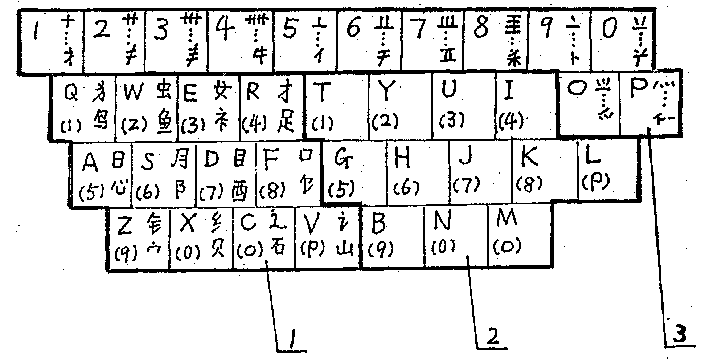Complementary encoding method for Chinese character input
An input method and Chinese character technology, which is applied in the field of computer Chinese character input, can solve the problems of increased memory difficulty, complex coding rules, and large number of radicals, and achieve the effect of low memory difficulty, simple coding rules, and few memory points
- Summary
- Abstract
- Description
- Claims
- Application Information
AI Technical Summary
Problems solved by technology
Method used
Image
Examples
Embodiment Construction
[0030] The present invention will be further described below in conjunction with embodiments and drawings.
[0031] The present invention is a Chinese character input complementary coding input method used in conjunction with a computer English keyboard 4, which includes radical arrangement, code taking sequence and duplicate code elimination. According to the present invention, the Chinese character roots are divided into two types: with or without turning points. The former uses the letter keys in the keyboard to input the letter code, the latter uses the number keys to input the number code, and the letter keys The letters "O, P" are included in the category of digital codes.
[0032] Such as figure 2 As shown, the English keyboard 4 includes a function key area 5, a character key area 6, a cursor control key area 7, a small keyboard area 8, and other function key areas.
[0033] The structure of character keypad 6 is as follows figure 1 As shown, it includes a first code area...
PUM
 Login to View More
Login to View More Abstract
Description
Claims
Application Information
 Login to View More
Login to View More - R&D
- Intellectual Property
- Life Sciences
- Materials
- Tech Scout
- Unparalleled Data Quality
- Higher Quality Content
- 60% Fewer Hallucinations
Browse by: Latest US Patents, China's latest patents, Technical Efficacy Thesaurus, Application Domain, Technology Topic, Popular Technical Reports.
© 2025 PatSnap. All rights reserved.Legal|Privacy policy|Modern Slavery Act Transparency Statement|Sitemap|About US| Contact US: help@patsnap.com



